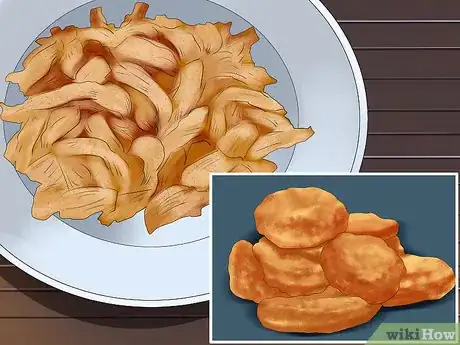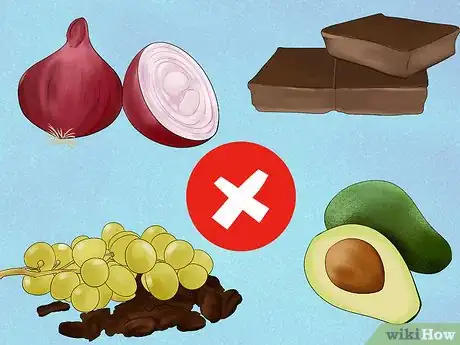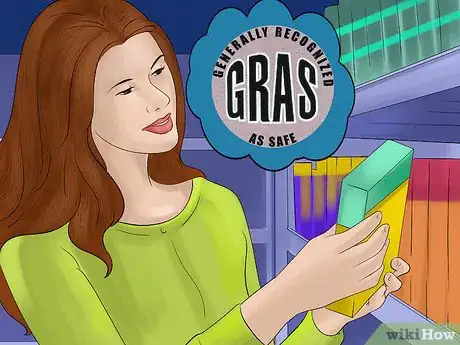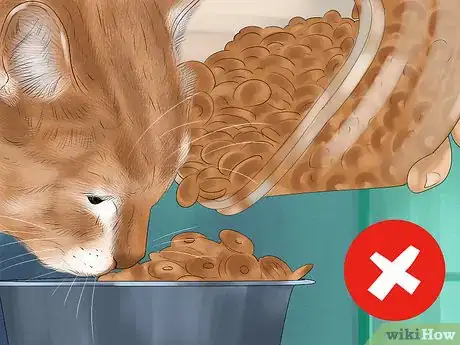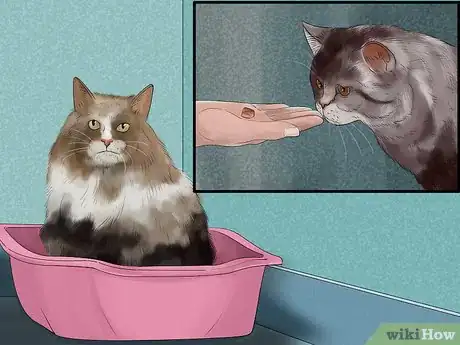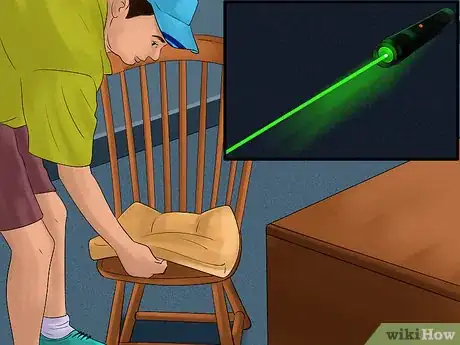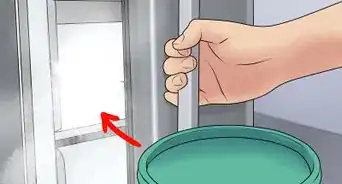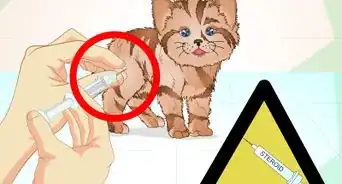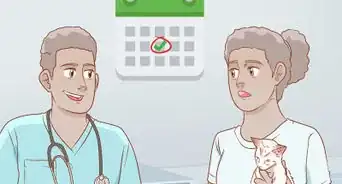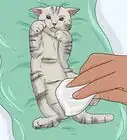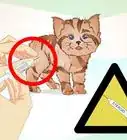This article was co-authored by Pippa Elliott, MRCVS. Dr. Elliott, BVMS, MRCVS is a veterinarian with over 30 years of experience in veterinary surgery and companion animal practice. She graduated from the University of Glasgow in 1987 with a degree in veterinary medicine and surgery. She has worked at the same animal clinic in her hometown for over 20 years.
There are 8 references cited in this article, which can be found at the bottom of the page.
This article has been viewed 21,654 times.
Giving your kitten treats can be a good way to show your love for your new companion. However, overfeeding is a serious problem in cats and can lead to health issues. This doesn't mean you shouldn't reward your kitten with treats from time to time though. Make sure you're giving your kitten treats that are healthy and will add to a well-balanced diet. In addition, treats should be given sparingly. Show your kitten it is loved by giving it your time and affection, in addition to the occasional treat.
Steps
Choosing the Right Treats
-
1Make your own treats. If you plan to give your kitten treats, making your own is the best option. These treats can include cooked pieces of tuna, chicken, fish, liver, or eggs. Kittens need about 30 percent of their diet to come from protein, so lean meats are a great option for snacks. For an even healthier option, buy organic meats and eggs to cook for your kitten.[1]
- Cut treats into bite-sized pieces. This will help you control the portion size of the treat and make it easy for your kitten to eat and digest.[2]
- It might take some trial and error to discover which treats are your kitten's favorites. Try feeding your kitten a variety of treats until you discover which ones it likes best.
-
2Avoid foods that are toxic to cats. Many “human” foods can be harmful to cats. When you're making treats for your kitten, keep it simple. Stick to mostly lean, unseasoned meats and avoid the following foods as they can be toxic to cats: raisins, grapes, onions, onion powder, alcohol, salt, tea, caffeine, chocolate, garlic, bread dough, avocados, certain nuts (like macadamia nuts), fruit seeds, mushrooms, and tomatoes. You should also avoid feeding your cat cooked bones as these can splinter and cause internal damage to your kitten.[3]
- In addition, many cats are lactose intolerant, so giving your kitten milk could cause it to have diarrhea.[4]
- Always check with your vet about what you should and shouldn't feed your kitten.
Advertisement -
3Read the labels on premade treats. Figuring out what is in premade cat treats is not always easy; labels are often vague, neglect to list all of the ingredients, and often don't include a calorie count. When you're picking out a premade treat for your kitten, look for treats that are approved by the Association of American Feed Control Officials (AAFCO). At the very least, this will ensure your kitten's treats meet pet food manufacturing standards.
- To find out more about the ingredients in a specific type of treat and the amount of calories it contains, contact the pet food manufacturer. There should be a number provided on the packaging.
- You vet should be able to provide you with some quality options for kitten treats as well.[5]
- It is recommended you avoid giving your kitten catnip until it is between three and six months old.
-
4Look for treats high in protein, amino acids, and minerals. Although the labels on cat and kitten treats are usually vague, if it does list the ingredients, choose a treat that has a high protein content and also provides a good amount of amino acids and minerals. Kittens require a higher amount of these nutrients than adult cats.[6]
- Ingredients on pet food labels are listed in order of predominance, so when you're looking for a treat that is high in protein, choose one with “meat” or “meat meal” listed as the first ingredient.
- It is best to stay away from treats that have artificial colors, flavors, stabilizers, and preservatives, but it can be tough to find one that excludes these altogether. If you can't find a treat that contains no artificial ingredients, look for ones that are identified as “Generally Recognized As Safe (GRAS).”[7]
- You can also give your kitten small pieces of steak, salmon, prawns, or other meats as a treat.
Deciding When to Give Your Kitten a Treat
-
1Give treats in moderation. You should give your kitten treats no more than two or three times a week. Feeding it treats more frequently may cause your kitten to avoid eating its food in the hopes of receiving a treat that it finds tastier. Overfeeding cats can contribute to obesity issues and result in health problems.[8]
- Treats should make up no more than five percent of your kitten's diet.[9]
-
2Provide treats for positive behavior. The best time to provide treats to your kitten is when you're giving it as a reward for positive behavior, like using the litter box or coming to you when you call its name. When you begin this type of training, you'll be giving your kitten far more than the recommended amount of treats. Once your cat starts consistently demonstrating the behaviors you've trained it to do, cut back on the amount of treats you give it. Instead, reward it with a treat only occasionally, replacing treats with other types of rewards like throwing its ball or showing it affection.
- When you're training your kitten, reward its positive behavior immediately. Cats have short attention spans and will not know what to associate the treat with if you wait too long after they perform the behavior you want.
- If you're feeding your cat more than the recommended amount of treats, cut down on the amount of food you give it at meals. Think about your kitten's overall food intake, factoring in treats, and keep it consistent.[10]
-
3Give treats as a skill-building game. Kittens and cats have a natural instinct to hunt prey. You can turn giving your kitten treats into a fun skill-building game by hiding its treat and encouraging your cat to hunt it down. To do this, try some of the following methods:
- Hide a treat out of sight (under a chair, for example), and then encourage your kitten to go find it. Let your kitten smell the treat first so it knows what to look for. You may need to help your kitten by giving it hints as to where the treat is hidden. For example, drag your finger along the ground toward the treat or shine a laser pointer or light in the direction of the treat.
- Get a food puzzle for your cat to play with throughout the day. Put a treat in this puzzle and let your cat figure out how to get the treat out.
- Attach the treat to the end of a string and let your kitten try to catch the treat as you move the string around.[11]
Warnings
- Always consult your vet before feeding your kitten a new type of treat. Your vet can recommend what is safe for your kitten and how much you should give it to keep it healthy.⧼thumbs_response⧽
- Cats and kittens do not generally need to receive treats. Feeding them too many can contribute to obesity issues. You can show your kitten love and affection by petting it, playing with it, and giving it your time and attention.⧼thumbs_response⧽
References
- ↑ http://pets.webmd.com/cats/guide/cat-treats-and-snacks-whats-healthy
- ↑ http://www.hillspet.com/en/us/cat-care/nutrition-feeding/healthy-homemade-cat-treats
- ↑ http://kb.rspca.org.au/what-should-i-feed-my-kitten_267.html
- ↑ http://pets.webmd.com/cats/guide/cat-treats-and-snacks-whats-healthy
- ↑ http://pets.webmd.com/cats/guide/cat-treats-and-snacks-whats-healthy
- ↑ http://pets.webmd.com/cats/guide/feeding-your-kitten-food-and-treats
- ↑ https://www.fda.gov/AnimalVeterinary/ResourcesforYou/ucm047113.htm#Ingredient_List
- ↑ http://pets.webmd.com/cats/guide/cat-treats-and-snacks-whats-healthy
- ↑ http://www.aspca.org/pet-care/cat-care/cat-nutrition-tips
About This Article
If you want to give a kitten treats, opt to purchase treats that are high in protein, amino acids, and minerals, since kittens require more nutrients than adult cats. You can also give your kitten small cooked pieces of steak, salmon, prawns, tuna, chicken, fish, liver, or eggs. However, make sure to avoid foods that could make your kitten sick, such as raisins, grapes, onions, alcohol, salt, chocolate, avocados, milk, or cooked bones, which can splinter. When training your kitten with treats, try to reward positive behavior immediately, since cats have short attention spans and won't know what to associate the treat with otherwise. For more advice from our Veterinary co-author, including how to use treats to create a skill-building game for your kitten, scroll down!
